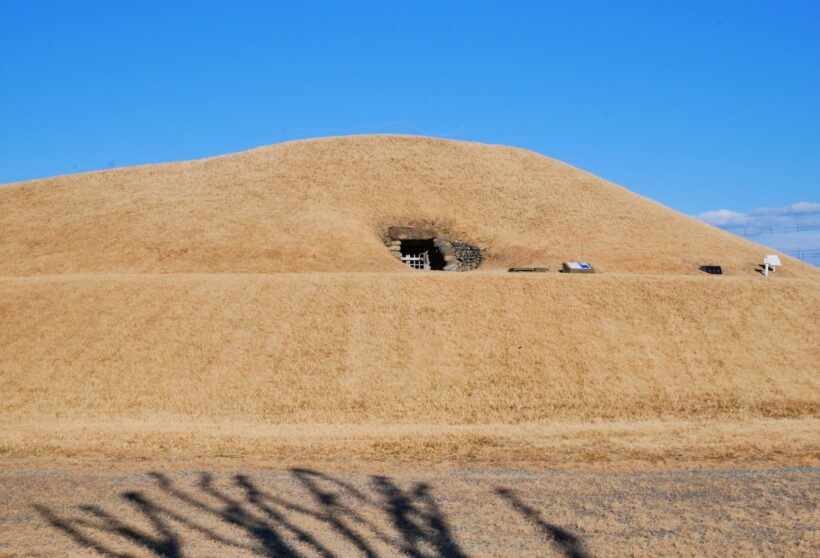Watanuki Kannonyama Kofun, Takasaki.
“The burial chamber is a horizontal trapezoidal stone-lined room in the middle of the posterior circular portion, opening towards the southwest. It was found to be intact. The dimensions were the largest found in Gunma Prefecture, with a total length of 12.65 metres. The wall stones are andesite blocks, and the ceiling stones are sandstone. The blocks weigh up to 22 tons, but as there is no source for these materials from the neighbourhood of the burial mound, it was necessary for these stones to be transported from a considerable distance to construct this tomb.
“The grave goods included two bronze mirrors, gold, silver and glass jewellery, iron swords, iron spearheads, fragments of armour, horse harnesses, saddles, stirrups and Sue ware, Haji ware, copper water bottles and other containers, many of which were found to be in excellent preservation. These included copper water jars and iron helmets thought to have been made in Northern Qi, and a copper water bottle and a mirror that were identical to objects excavated from the burial chamber of the Tomb of King Muryeong of Baekje in Gongju, South Korea. As these objects must have been cast from the same mould, it indicates a strong connection between the rulers of the Keno region of ancient Japan and the ancient Korean Peninsula.”
